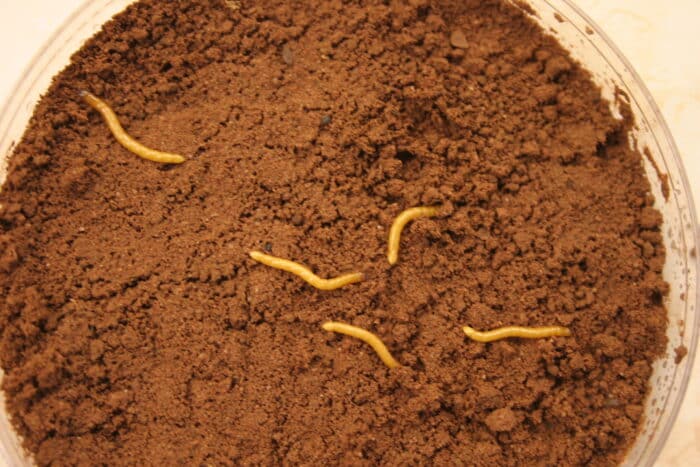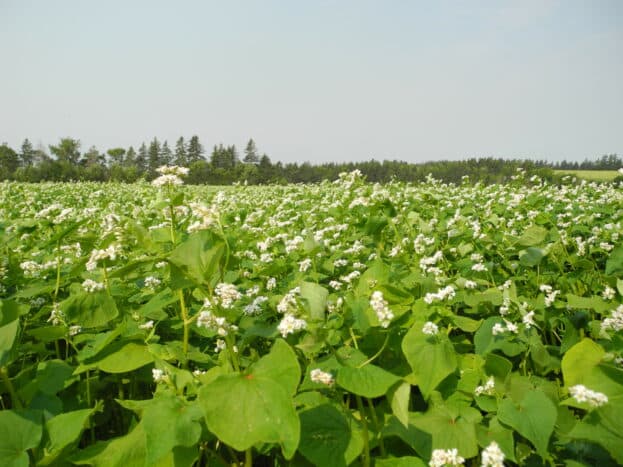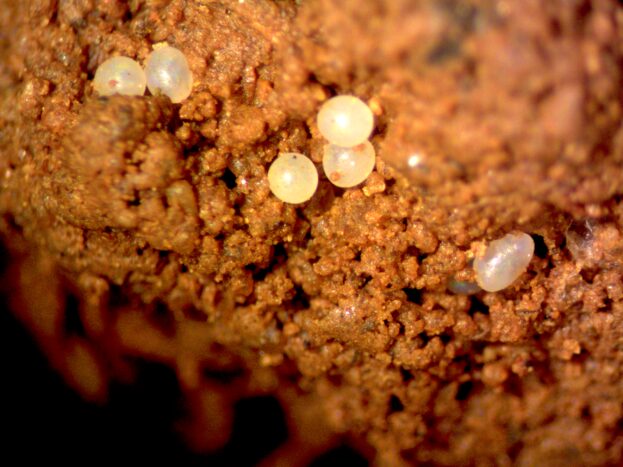As a national wireworm research project wraps, growers have more ways to control the pest.
When Christine Noronha first started researching wireworms more than a decade ago, there wasn’t much known about the pest and how it affected potato crops in Canada. All growers and people in the industry knew was that wireworms were wreaking havoc on their potato fields.
“We’ve learned a lot more about the insect. And we’ve actually reached a point where we are developing tools now that growers can use,” Noronha, a research scientist with Agriculture and Agri-Food Canada (AAFC) explains in a phone interview.

The project initially started in 2018 and is set to wrap early next year. It’s part of the Canadian Potato Council with the Canadian Horticultural Council cluster projects funded by the Canadian Agricultural Partnership. Throughout the course of the past four years the wireworm research team, led by Noronha, has tested various tools that can be used to control the pest across the country.
This wasn’t the first research cluster project though — in two previous clusters, Noronha’s team were able to study the efficacy of chemical products available for wireworm control that helped Health Canada’s Pest Management Regulatory Agency (PMRA) approve new products for use in Canada. The group also completed comprehensive surveys of wireworm populations across the country, helping growers to understand how much of a problem the pests are. They’ve also done extensive work on wireworm control through methods such as rotational crops and biological control.
Wireworms have a long-life cycle. The adults come out in the spring, lay their eggs and then die — over the course of two months. Once the eggs are laid, the larvae, which are called wireworms, hatch and then grow into adults called click beetles. The wireworms live in the ground, under the soil, for as long as two to five years, depending on the species. In potatoes they eat holes in tubers reducing the overall quality of the crop.
Finding Tools to Control Wireworms
Noronha’s team have tested and found a wide variety of methods to control wireworm populations from coast to coast. The control methods range from chemical treatments to rotational crops.
In late 2020 it was announced the PMRA had approved the registration of broflanilide. The Group 30 insecticide, sold as the insecticide Cimegra by BASF, had been long awaited. It was available for in-furrow application for the 2021 season offering in-season control as well as population control over difficult to manage chewing insects such as wireworms. Noronha’s team were involved in testing Cimegra as part of the PMRA registration.
“We found that (Cimegra) actually kills them, it doesn’t just paralyze them. Because the majority of the products that we had before that we were testing, it would give some protection to the crop, but it wasn’t killing the wireworm. So, we were not reducing the population in any way,” Noronha says.

The group also experimented with various rotation crops discovering which ones would help suppress wireworm populations. In previous studies it was found buckwheat and mustard worked, but they wanted more information on just how well these crops worked and how much of the crop you need to plant in a crop mix.
“The reason for doing this research was to see if these crops can be used in a crop mix because growers were worried about working the soil every year and planting a new crop every year. So, they wanted to also plant other crops that would put organic matter into the soil. They wanted to grow mixtures of crops like sorghum, peas, pearl millet and others, so we studied the use of wireworm suppressive crops in these mixes,” Noronha explains.
In greenhouse studies, Noronha’s team found growers need only plant 25 per cent of buckwheat in a crop mix for it to suppress wireworm populations in the soil.
The group also tested if sorghum sudan grass can be used to suppress wireworms. The crop was tested against barley and buckwheat. The first-year sorghum sudan grass was planted in a trial on Prince Edward Island it was found there was some wireworm suppression, but the following year there wasn’t as much suppression happening. At another trial in London, Ont. it was found sorghum sudan grass reduced wireworm numbers by about 50 per cent.

“Some of the growers didn’t want to use buckwheat because they were worried that it would become a weed in their field the following year,” Noronha adds. “Our weed scientists studied this aspect and he figured it out that terminating the crop at the appropriate time by plowing or mowing it reduced the chance of it becoming a weed the following year.”
There has also been pheromone research done by the team. Noronha explains before this research project they only had pheromones for three of the European species of wireworms. The team was able to discover and identify the main species of wireworms across Western Canada and Ontario. Once the pheromones are identified bait traps can be used to identify the species and how large wireworm populations are in fields. The Western Canadian team was also able to develop an identification guide for wireworm species found on the Prairies. Noronha notes they’re still studying wireworm populations across the country, with this being the last year of monitoring.
“We found that populations in P.E.I. are decreasing after we started using the buckwheat and the mustards crops in rotation with potatoes. We’re still going to continue to monitor what the status is. Some of the growers have started using other crops and some of them continue to wireworm suppressive crops in their rotation. So, we’re going to find out if, by stopping the use of these suppressive crops if the population starts increasing or not,” she explains.
Practical in the Field Knowledge
One of the farms Noronha’s team worked with was G Visser & Sons, a fresh potato and packing operation in Orwell Cove, P.E.I. They grow around 1,000 acres of fresh and seed potatoes annually. They also grow rotational crops of winter wheat and cover crop mixes, trying to pick crop varieties which will help with wireworm control, and swapping land with cash crop farming neighbours.
“Wireworm became a problem for us quite quickly. We definitely weren’t the first on P.E.I., there was others that we were hearing had wireworm issue. But when it started to affect your own crop, you start to really take an interest. You become aware this is something that we need to do our best to try to try to mitigate the damage from,” William Visser, a partner in G Visser & Sons, explains in a phone interview.
The team at G Visser & Sons have worked with Noronha’s team for most of the past decade to learn more about the wireworm populations in their fields and find ways to control them. Using bait traps, they’ve discovered wireworms aren’t necessarily widespread across all fields with populations in them.
Not all the trials G Visser & Sons were involved in worked out. One trial had them trying to spray for click beetles as they emerged in the spring, it was discovered though it was hard to get the timing right in order for it to work.

“If there would have been products identified that were registered for that purpose, it was certainly a tool that you could have used but it was a hard one. It was a bit complicated and intense to try to manage the timing,” Visser explains.
For the wireworm control methods that worked, Norohna is working on developing a manual growers will be able to use across the country to learn more about wireworms and how to control them. The manual is in the very early stages with Noronha saying she’s still sorting out the best way to distribute it whether that’s as a digital version or physical copy.
For now, this research project is where Noronha and her teams current research work on wireworms will end. Wireworms weren’t identified as one of the research focuses for the cluster projects starting next year.
“I think we have come a long way from where we were when I first started. We didn’t know anything about the insect. We now know about the biology, where it goes, a little bit about its ecology and have developed control options. We know so much more about it,” Noronha says. Adding with the research her team has done, they’re finding they’re now ahead of other countries in their knowledge on wireworms.
“They’re still trying to figure out what to do with the species that they have. They don’t understand them. So, they always tell us that we are so much more ahead of the game.”
Wireworm Research Team:
- Christine Noronha at Charlottetown Research and Development Centre: researching insecticides, rotational crops biology, wireworm and click beetle biology and behaviour, pheromones and surveying populations in P.E.I.
- Gerhard Gries at Simon Fraser University: extracting pheromones and identifying them
- Haley Catton at the Lethbridge Research and Development Centre: researching rotational crops
- Ian Scott at the London Research and Development Centre: researching insecticides and rotational crops
- Wim van herk at the Agassiz Research and Development Centre: researching insecticides, pheromones and surveying species across Canada
Read More:
Top Contenders for Potato Pests and Diseases Across Canada for 2022
RNA-based Biopesticide Kills 98.3 Per Cent of Colorado Potato Beetles









